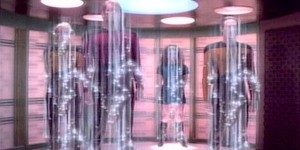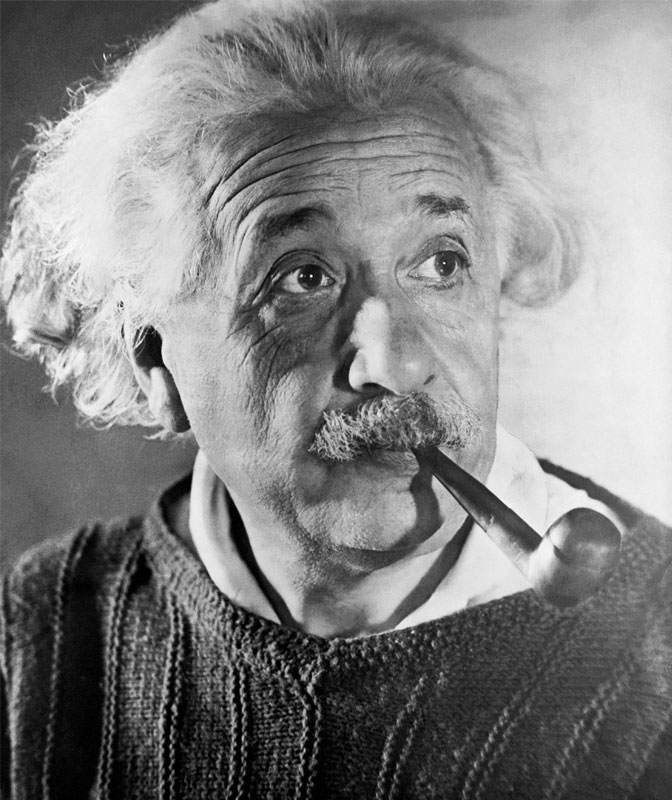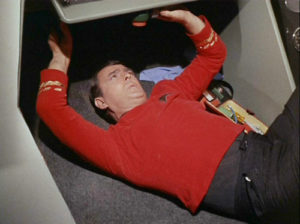 So, science has taken a giant step towards making the sci-fi, Star Trek-esque dream of teleportation a reality! Well, no, they haven’t.
So, science has taken a giant step towards making the sci-fi, Star Trek-esque dream of teleportation a reality! Well, no, they haven’t.
“But sure they have!” You say… “News outlets everywhere are saying the same thing; scientists transported matter across a room, more than ten feet!” Well, actually…no they didn’t.
“Now you’re just being a curmudgeonly old pedant.” I’ll not deny that, but it doesn’t make me wrong.
Here’s the problem. The public perception of the word ‘teleportation’ is quite different than the scientific perception. When these scientists said they teleported matter, they didn’t mean what you think they meant.
In a paper published in the journal Science, on May 29, lead author Ronald Hanson, the Antoni van Leeuwenhoek Professor at Delft University of Technology in the Netherlands, exclaimed that he and his team – a group of researchers who form the Quantum Transport Group at Delft – had “succeeded in deterministically transferring the information contained in a quantum bit, to a different quantum bit 3 meters away, without the information travelling through the intervening space.”
That sounds impressive, doesn’t it? It should, mainly because it is. However, if you don’t understand what that says, you may give it more credit than is due.
The headlines since that paper came out have been quite sensational, as you might expect. Though it seems few of the authors of those headlines really understands what any of that means. Most of those headlines make the claim that human teleportation is only a few steps away, now that these intrepid scientists have moved a particle ten feet across a lab. However that’s not really what happened here.
Here’s the gist of it.
 Hanson and his team have been working on increasing the speed at which a computer can process information, using quantum theory. Specifically, they’re using a well-known but little understood quantum physics phenomenon called entanglement to their advantage. You may have heard of this idea; it’s what Albert Einstein called “spooky action at a distance”, something that he considered impossible – though it’s somewhat humorous that it was his calculations, in conjunction with Boris Podolsky and Nathan Rosen in their 1935 paper on relativity that allowed it to be discovered in the first place.
Hanson and his team have been working on increasing the speed at which a computer can process information, using quantum theory. Specifically, they’re using a well-known but little understood quantum physics phenomenon called entanglement to their advantage. You may have heard of this idea; it’s what Albert Einstein called “spooky action at a distance”, something that he considered impossible – though it’s somewhat humorous that it was his calculations, in conjunction with Boris Podolsky and Nathan Rosen in their 1935 paper on relativity that allowed it to be discovered in the first place.
Quantum entanglement is defined as: “a quantum mechanical phenomenon in which the quantum states of two or more objects have to be described with reference to each other, even though the individual objects may be spatially separated.”
That means, essentially, that in certain circumstances, two (or more) quantum particles can become entangled, wherein a change to the quantum state of one particle will instantaneously affect the quantum state of the corresponding particle, no matter the physical distance separating them.
Einstein was leery of this concept because, to him, and to other physicists at the time, it seemed to directly violate the ultimate speed limit of the universe – the speed of light. We now know that the speed of light is almost more of a recommendation than a law, even though it reigns supreme everywhere that matters.
It’s this invisible, instantaneous connection between particles that Hanson and others are using to their advantage. The key aspect is that the transfer of information between particles happens instantly, which can be (crudely) visualised as: if a pair of particles, say quarks, are spinning in a particular direction, then changing the direction in which one of the particles spins will instantly change the direction of the other particle, without any direct outside influence on the second particle. That change happens with zero elapsed time between the initial and resulting effect. Like, no time at all…most literally instantaneous.
You might be wondering what this all has to do with teleportation, and we’re getting to it.
Essentially, Hanson and his team, and other teams working on the same technology, are hoping to leverage this mysterious connection between quantum particles, to create superfast computers that use entanglement to transfer information, rather than the current standard, which is through electrical impulses. Electricity is fast, but not instantaneous, and it generates a lot of heat. Quantum computing avoids those common problems, while, in theory, offering processing speeds at a quantum level.
So, their teleportation experiment was a test of the computer systems they’re developing, allowing them to successfully transfer the quantum state information of a single particle from one location to another (just over 3 meters) in a laboratory setting. It’s an incredible result, though it has been done before, just not with this degree of fidelity.

I’m givin’her all she’s got, Captain!
As a side effect of their results, Hanson and others have theorised that the same methods could eventually be used to transfer the quantum state of massive groups of particles, say the particles that make up a human being, to another location. If you’ll offer some good humour, you can see how that sort of, kind of, in a round-a-bout way resembles the transporter technology of Star Trek.
No actual matter is being moved from one location to the other, in fact nothing is being moved at all. No information, no matter, no energy. What’s happening, is that the quantum particles that are already in place at the receiving site (the particles exist everywhere), are being manipulated into changing their quantum state, and ultimately transform into a copy of the original object that still exists at the sending location.
In this way, the analogy is far closer to the Star Trek replicator technology than the transporter. Except insofar as on Star Trek: The Next Generation, they often described the process of destroying the person or object as it existed on the sending pad, and recreating it at the receiving site. But for clarity sake, it’s important to note that nothing is actually being sent anywhere.
So, while these eager reporters aren’t completely wrong, they did get some of the details a bit confused. This is a wonderfully exciting advance in the quantum computing arena, and, as has been said, brings us one tiny step closer to the idea of teleportation, but as has also been said, there are some caveats that must be understood before anyone runs off claiming that the Star Trek utopian society is waiting around the corner. And even if we were talking about the same concept, the actual technology is still decades, even centuries away.




